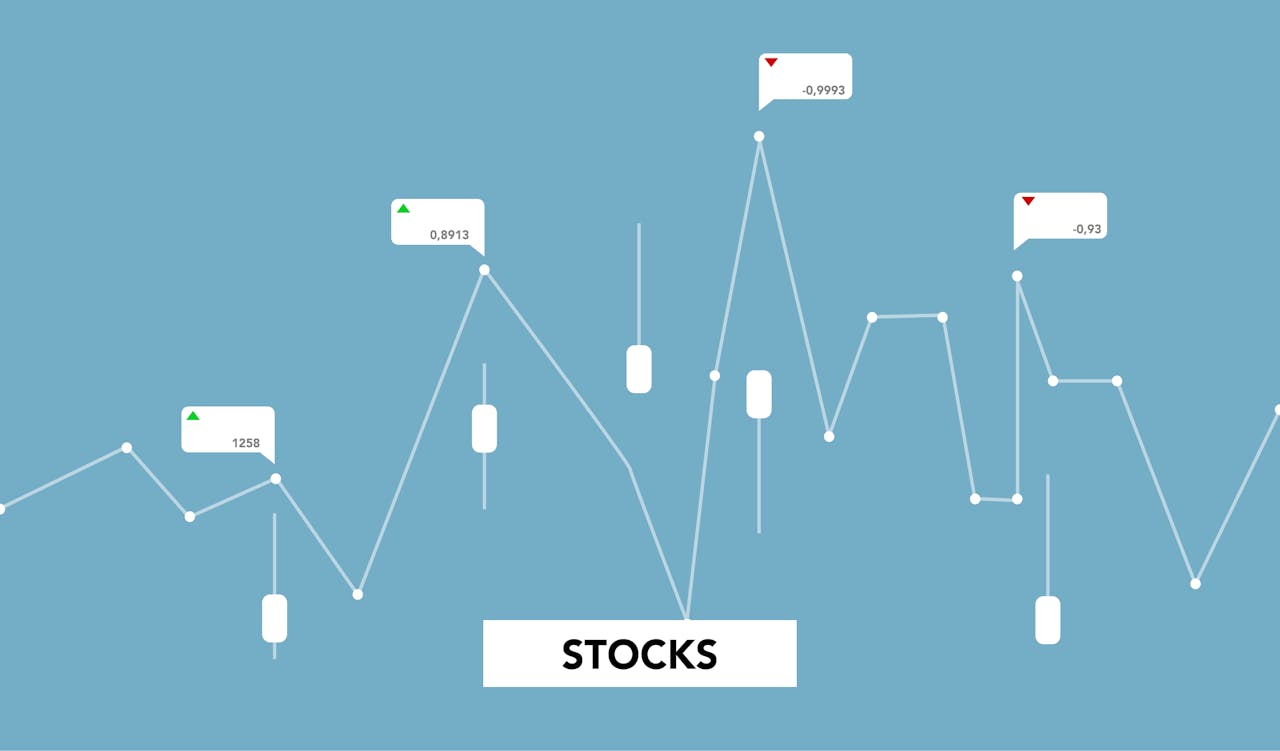Stock market charts are invaluable tools for investors. They provide visual representations of price movements over time, enabling investors to make informed decisions. Understanding how to use these charts effectively can significantly improve investment strategies. In this article, we will explore the basics of stock market charts, their types, and how to analyze them for optimal investment outcomes.
What Are Stock Market Charts?
Stock market charts are graphical representations of the price movements of a stock, index, or other financial instruments over a specific time period. These charts can display various types of data, such as opening prices, closing prices, highs, lows, and volume. They help investors to visualize market trends, price patterns, and potential price movements.
Types of Stock Market Charts
There are several types of stock market charts used by investors, each with its unique features and advantages.
Line Charts
Line charts are the simplest and most basic form of stock market charts. They plot closing prices over a specific period and connect them with a line. Although they provide an easy-to-read visual, they do not show detailed information about the stock’s price movements within the trading day.
Bar Charts
Bar charts offer more detail than line charts. Each bar represents the price range for a single period, showing the open, high, low, and close prices. The vertical line in the bar shows the range, while the horizontal tick marks on the left and right represent the open and close prices. This type of chart provides more insight into daily price fluctuations.
Candlestick Charts
Candlestick charts are perhaps the most popular among investors due to their visual appeal and ease of interpretation. Each candlestick represents a specific time period and contains the same price information as a bar chart, but in a more visually intuitive way. The candlestick’s body shows the difference between the opening and closing prices, while the wicks represent the high and low prices for that period.
Point and Figure Charts
Point and figure charts focus on price movements rather than time intervals. They are used to identify trends and reversals by tracking price patterns in a more simplified format. These charts are less commonly used but can still offer valuable insights when applied correctly.
Why Use Stock Market Charts?
Stock market charts provide several advantages for investors. They allow for better decision-making by offering a visual representation of historical price data. Charts help investors identify trends, spot key support and resistance levels, and recognize potential reversal patterns.
Identifying Trends
One of the primary reasons to use stock market charts is to identify trends. Trends can be classified as uptrends, downtrends, or sideways trends. An uptrend occurs when the price consistently moves higher, while a downtrend represents a decline in price. A sideways trend occurs when the price moves within a defined range.
Recognizing these trends early on allows investors to make decisions that align with the current market direction. For instance, during an uptrend, an investor may decide to buy, while in a downtrend, selling or short-selling might be more appropriate.
Spotting Support and Resistance Levels
Support and resistance levels are key concepts in technical analysis. Support is the price level at which a stock tends to find buying interest, preventing further declines. Resistance, on the other hand, is the price level where selling pressure typically emerges, limiting price increases. By identifying these levels on a chart, investors can better predict price movements and set their entry or exit points accordingly.
Recognizing Chart Patterns
Another important benefit of stock market charts is the ability to identify chart patterns. Certain patterns, such as head and shoulders, double tops, and triangles, can signal potential reversals or continuations of trends. Recognizing these patterns early can help investors capitalize on price movements and adjust their strategies accordingly.
How to Read Stock Market Charts
Reading stock market charts requires understanding the basic components of each chart type. Let’s take a closer look at how to interpret different elements of a chart.
Timeframes
Stock market charts display price data over various timeframes, ranging from minutes to years. The timeframe you choose depends on your investment strategy. Short-term traders typically use charts with shorter timeframes, such as 1-minute or 5-minute charts, while long-term investors might use daily, weekly, or monthly charts.
Price Action
The price action on a stock market chart is represented by the movement of the price line, bars, or candlesticks. Observing how the price moves over time can provide insights into market sentiment and potential future movements. A series of higher highs and higher lows indicate an uptrend, while lower highs and lower lows suggest a downtrend.
Volume
Volume refers to the number of shares traded during a specific time period. Volume is often displayed as vertical bars below the price chart. An increase in volume can indicate stronger market participation and the potential for more significant price movements. Low volume, on the other hand, may suggest indecisiveness or lack of interest in the stock.
Common Chart Indicators and Tools
To enhance chart analysis, investors often use various indicators and tools. These tools help to confirm trends, predict price movements, and generate buy or sell signals. Some of the most commonly used indicators include:
Moving Averages
Moving averages smooth out price data by calculating the average price over a specified number of periods. The two most common types are the simple moving average (SMA) and exponential moving average (EMA). Moving averages can help identify trends and provide support or resistance levels.
Relative Strength Index (RSI)
The RSI is a momentum oscillator that measures the speed and change of price movements. It ranges from 0 to 100 and is typically used to identify overbought or oversold conditions. A reading above 70 suggests overbought conditions, while a reading below 30 indicates oversold conditions.
Bollinger Bands
Bollinger Bands are a volatility indicator that consists of three lines: the middle line is a moving average, while the upper and lower lines are standard deviations away from the moving average. When the price moves close to the upper band, the stock may be overbought, and when it approaches the lower band, it could be oversold.
Tips for Using Stock Market Charts Effectively
While stock market charts provide powerful tools for decision-making, they must be used properly to yield accurate results. Here are some tips for getting the most out of your chart analysis:
- Combine Multiple Indicators: Using a single indicator in isolation can lead to false signals. It’s best to combine multiple indicators to confirm trends and avoid making hasty decisions.
- Stay Disciplined: Avoid emotional trading based on short-term price fluctuations. Stick to your strategy and use charts to guide your decisions rather than react impulsively to market noise.
- Practice with Paper Trading: If you’re new to using stock market charts, start by practicing with a paper trading account. This allows you to test your skills without risking real money.
- Keep Learning: Stock chart analysis can be complex, so continually educate yourself on new techniques, patterns, and indicators. The more you learn, the better your ability to analyze charts effectively.
Conclusion
Stock market charts are essential tools for investors looking to make informed decisions. By understanding the different types of charts, how to read them, and the key indicators that enhance their analysis, investors can gain a significant advantage in the market. However, it’s important to combine chart analysis with a sound investment strategy and ongoing education. By mastering stock market charts, investors can confidently navigate the complexities of the stock market and increase their chances of success.
Check out our Facebook or X accounts.
For more topics check here.



